This piece was first printed Monday on Women’s Voices for Change:
With my breasts aching and full of milk, I left Tamar, my three-week old baby girl, with a sitter and attended the opening reception of the Washington Area Artists Exhibition at the Corcoran Museum of Art. After leaving school, I lived in Washington for the first year of marriage. This was a juried show, and I was proud to have a large painting in it. Work I had done while pregnant with my first child. I stood in front of the painting with my husband and listened to peoples’ comments. My favorite was: “This must be an artist from Baltimore because I don’t recognize the name.” A big compliment to me. The work was strong; therefore, the artist should be familiar.
I was out of school for less than two years and it all seemed so easy. I could have my career, my children, and live happily ever after. Although I have continued to paint through life with two children, a divorce, many moves around Manhattan and on into Nova Scotia, it hasn’t been easy. Not at all.
I was lucky in one way: The children were the easiest part. I was blessed with intelligent, supportive children who, I dare say, raised me, taught me how to be a better person. The art part I taught myself. Through all the years of marriage and child rearing, I continued to paint, sometimes more, sometimes less.
My children have been on their own for about twenty years now. I’ve satisfied the mothering instinct with pets. I’m still very close to my children. I have some photographs sitting on the shelves in my studio. They are of my children when they were young. I see the photos every time I enter the room; they are my inspiration. I wouldn’t be the artist I am today without my kids. I want to be a good example for them so they can know it is possible to do what you believe in, to believe in what you do, to follow your passions.
When I had my first baby, my biggest obstacles to painting were the constant care she needed and my own loneliness. I had plenty of time to work—if I had only been more mature myself. My own mind was the biggest challenge.
I’d married for security, wanting only to make art and have a family. I never wanted to “work” again. I had had several “dumb” jobs before marriage—from waitressing to clerical to sales. I was even fired from a job selling Christmas cards at the Metropolitan Museum of Art in New York because my attitude was not good—it was October and without many sales, a very boring job. I was later fired from a clerical job because I admitted I was an artist.
Even though I thought the security of being married to a financially successful man would help my art, I found it ultimately suffocating. My children grew up with and without and with television. We had to give the TV set away three times— because I became addicted to daytime soaps. It was a relief from the tensions of my daily life. The final decision to quit the addiction was when, on a beautiful sunny day in April, I found myself sitting in front of the TV flipping between the various soaps then playing with my three-month old son on my lap. I was in tears as I asked my husband please, give away the set.
I’m not someone who has a generic love for children. To me they are people: some I love, some not so much. It takes me time to get to know a person of any age. But I learned to love my own children unconditionally. It wasn’t as easy as I had imagined. I had about as much experience with children as I had with being an artist when I started each “profession”.
My studio is in my home. I tried once to have an “outside” studio; that was the last year of my marriage. I saw it as my “halfway house,” where I could feel what it would be like to be away from the domestic chores and struggles I thought were hindering my artwork. I didn’t do much valuable work that year. But I did gain the strength to leave the marriage and discover more intelligent ways to feed my art, instead of starving it as I had been doing.
When my second child, Aaron, was born, I was much more comfortable with the responsibilities of child rearing. I brought him into my studio in an infant seat and, as he watched, I drew from a model. When he was older, he had become so accustomed to my working that when I was grouchy, he would tell me to go paint.
We also had lavish dinner parties often, straight out of Gourmet Magazine. I enjoy cooking and the social aspect of serving a good meal. But when I would spend three days preparing a meal for six people, I knew I was avoiding my studio. About a year after one dinner like that we went to a party given by one of our invitees. At the meal people were complimenting the hostess. She thanked them and commented on my culinary expertise. I said I haven’t done that since they were over. And she said: “Good!” Shortly afterward, I left the marriage entirely, with Aaron and Tamar (then five and eleven), two cats, two fish tanks, a gerbil and tons of art supplies. Freed from the marriage, I began to develop a more professional relationship with my work.
The most important thing for me as a mother was to always accept my children for the people they are. To let them know I loved them unconditionally and that they could do whatever they set their minds to do. That was hard in some ways, because I still had to learn to be more accepting of myself.
Once I did, which took many years, I was able to be a better mother while also having a steady flow of creativity. What helped me overcome the obstacles to making art was becoming a student of Buddhist meditation. With the practice of calming my mind, I was able to get out of my own way. For the past thirty years I have experienced a continuous flow of artwork. Meditation has also been helpful to being a better mother.
People often ask me if I have trouble selling my art, my “babies”, letting go of it. No, this what I do. I do sometimes keep some small pieces when I feel they are seminal to what I am doing, when there is something I still need to learn from them. If I didn’t let go of the paintings I couldn’t do more. That would be counterproductive. My tendency as a mother was to push the babes out of the nest as soon as they seemed able to navigate this very complicated world. It’s what I would want—independence. I also want that for my artwork. Each painting has a life of its own. Each person as well. Individuality is important; it is important for each painting to speak for itself.
Both of my children are working in the arts—Tamar writing and photography, Aaron in illustration and design. Even though they saw the emotional and financial hardships I have and do endure, they also see how I continue to work and pick away at the problems that arise from being an artist. They see the value of a life centered on the creative process.
Although I am not fond of labels, even in my artwork, I would say I am a domesticated dreamer. Even without the children here, I still enjoy my home. I enjoy having a studio at home so I can continue the household while I dream. It works for me.
Last Sunday, when Suzanne was here, somehow we started talking about artists’ books. I dug into my bookshelves and pulled out stacks and stacks and stacks of books I had made, mostly in the early ‘80s. I was surprised, looking through them, how many interesting ideas I had explored and how many of them had found their way into my artwork. And also, how many more I can use. Those books were more than just something in the past. They seem to be foretelling paths into the future.
I did my first collage pieces in those books. Also were some pencil sketches, all abstract, with masked out areas to form “images”. My favorites were the ones where small marks and cut-out areas moved through the book to tell stories. Probably I will now be doing more books. Reading is something I love. Making a book makes sense.
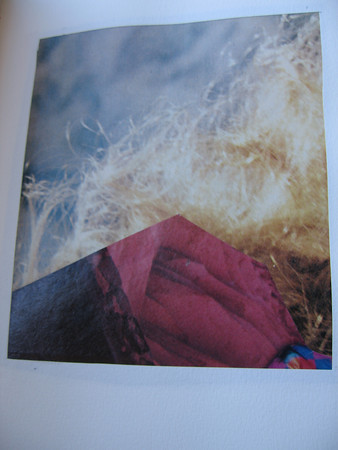
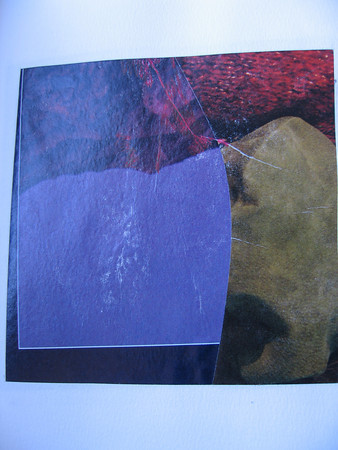
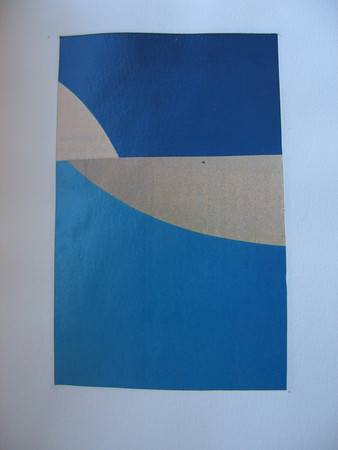


My driveway is a sandwich of ice/sand/ice/sand with a layer of light snow for frosting. Meanwhile, Lila and I have been taking delicious walks on the lake. When there is a snow covering, walking is easy. Sometimes it is too icy but then, sometimes even the road is treacherous. After a winter like this, no one will have a good reason to complain about black flies in May.
Suzanne and Lucky came over today. We (the people) had a lovely lunch of chicken soup and fresh-out-of-the-oven banana bread, then we all four went for a walk on the lake. Suzanne just sent me the perfect photo of the girls doing their usual thing, running:
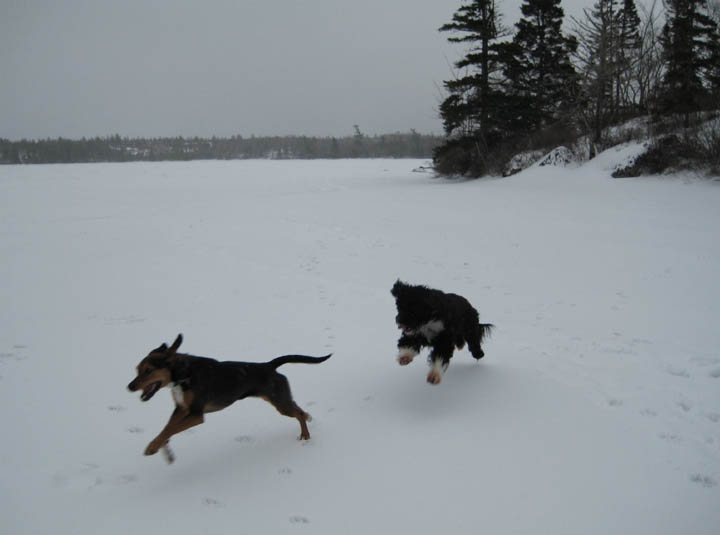
After they left, my neighbor Mike came over with his three dogs and Lila had another run. It is not all a playday. I did put in a good morning in my studio. But then, studio time is usually a pleasure. This morning, however, was the pre-painting work: I finished getting some large canvases (three 5' x 7' pieces, each made up of three panels) ready for paint. That means they now have three coats of primer (a back-breaking job I am happy to turn over to any elf who stops my way), some collage of photos and fabrics, and a final coat of primer to cover any glue that may be left on the canvas area. So now it really will be playtime in my studio!
They say an optimist is someone who leaves the patio furniture out all winter because spring will surely come soon.
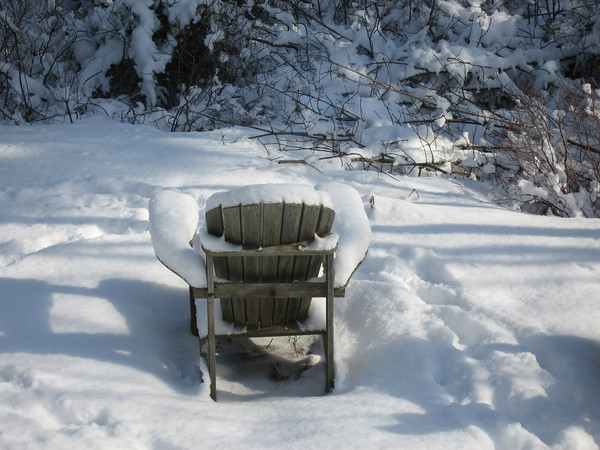
It's snowed so much in the past couple of weeks that it is hard to see around corners of the streets in Halifax. There's no place to put all the snow. It's made the streets so narrow often only one car can get through at a time. People say it's never been this bad but I remember the first year I was here, in 1984, the winter was just like this. It was a new experience for me then. I'd not seen so much snow in my life. And certainly didn't know how to drive on snow and ice. I went off the road a couple of times. It's still not my favorite past-time, the winter driving. In every other way I do enjoy the snow.
When I mentioned how I wanted my large canvases to have the qualities of the small black and white pieces, my friends who visited on Sunday felt it wasn’t necessary. The small pieces are just what they are and the canvases are something else. I’m still contemplating this one.
A couple more small pieces:
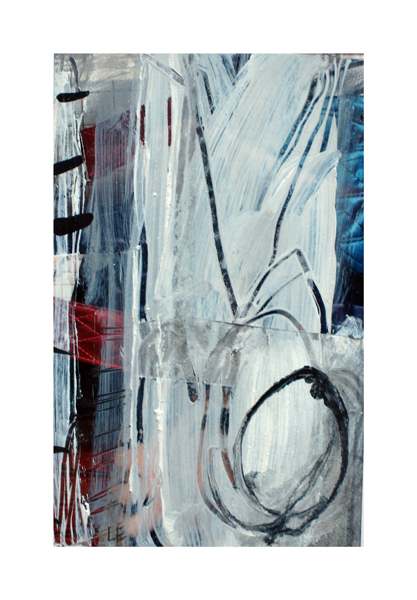
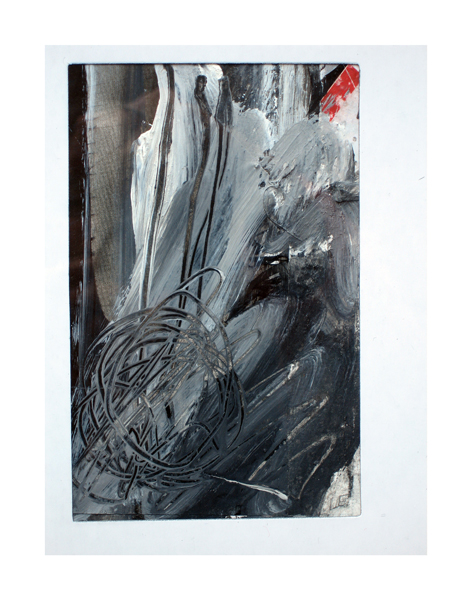
Yesterday some friends came for a visit and a walk on the lake. The ice is twenty inches thick. And with a fresh snow cover it makes walking easy. So very beautiful! There is nothing like standing in the middle of a lake where six months ago I was swimming.
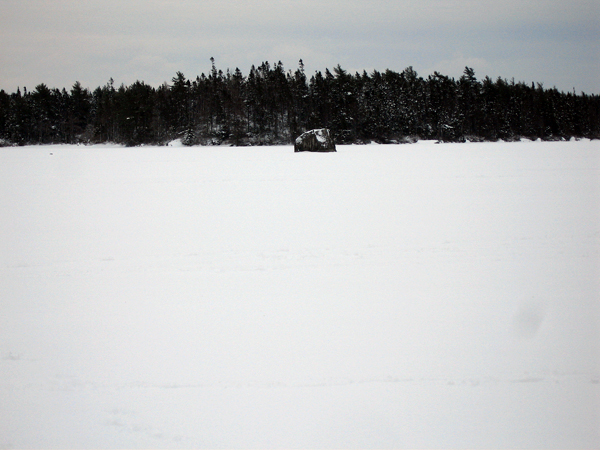
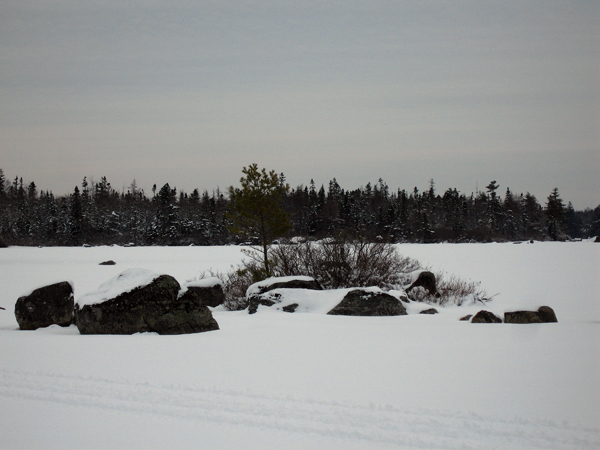
and looking back to see my house:
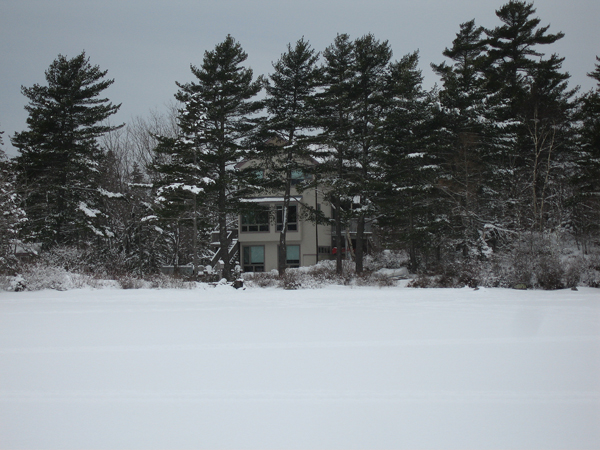
A couple of days ago I saw part of a documentary (CBC TV) on the creative process. The focus was on the brain activity as seen during musical composition. The researchers wired Sting’s brain to machines and ran him through an MRI scanner while he was creating music. The doctor was very excited by his findings, mainly, the equal use of the right and left hemispheres of the brain when an accomplished composer such as Sting was composing. Apparently this was unusual.
Sting himself was, in the end, not as happy about the research. I was fascinated by his discomfort with the process. He wasn’t so sure he wanted to have his creativity analyzed. His fear was that once it is understood it would loose its magic. That he’d no longer be able to compose, to make music.
To the artist when something works it is not clear how. It just does. It is magic. I can spend hours, days, years trying to figure out why one painting is so much better than another and still not understand how it got to be that way. It’s a process that belies analysis. It often feels like another hand at work through mine. It just feels right. All of the descriptions about what a piece of art means can hardly explain the core of the work. That is untouchable. Only felt.